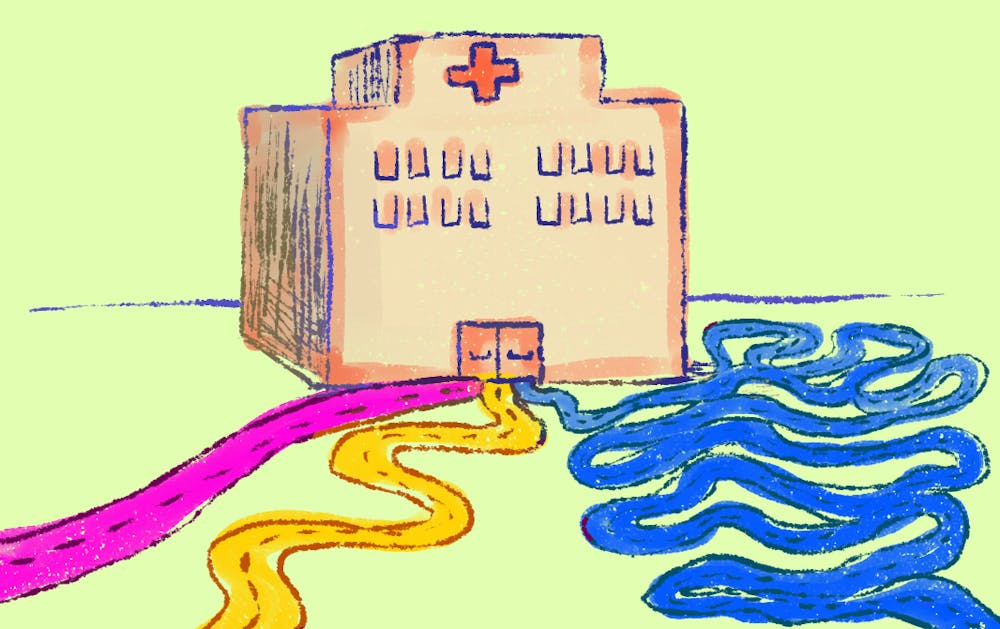April is National Minority Health Month, and this year, racial and ethnic minority communities are facing the consequences of health care disparities during the global COVID-19 pandemic.
Issues like higher rates of underlying conditions, food deserts, limited access to health care and environmental toxins put communities of color across the nation at higher risk for contracting COVID-19, the disease caused by the Novel Coronavirus. If someone does get COVID-19, racial biases in the healthcare field and limited resources may make it more difficult for them to receive adequate care.
Swapna Reddy, a clinical assistant professor in the College of Health Solutions, researches health disparities and health law. She said while COVID-19 is an egalitarian disease that can affect anyone, it impacts some groups more than others because of existing inequalities.
“When we get this virus that is, quote-unquote, kind of an equal opportunity offender, it is going to seep into those cracks,” Reddy said. “And really where we have our largest weaknesses already — before we were dealing with the virus — those extreme areas of inequity, those extreme cracks in our society, are really going to feel the pressures of these viruses the most.”
A Centers for Disease Control and Prevention report on hospitalization rates of confirmed coronavirus cases released April 8 found in a sampled area, 59% of residents were white and 18% were Black, but of the hospitalized residents in that area, 45% were white and 33% were Black.
The findings in the report need to be confirmed with additional data, according to the CDC.
Out of the 142 COVID-19 deaths reported on the Arizona Department of Health Services COVID-19 dashboard, 21% were Indigenous. As of July 2019, the U.S. Census Bureau estimated only 5.3% of Arizona’s population identified as Indigenous.
Matthew Speer, a faculty research associate in the College of Health Solutions, said it is important to commit to helping minority communities access resources in tangible and direct ways.
While Native American and Alaska Native communities were promised $40 million in federal relief funds to help battle COVID-19, that money has been slow to arrive to Navajo leaders, according to The New York Times.
“We know that these inequities contribute to poor and adverse health outcomes, but we haven't done enough, whether it be policy, legislation and so forth to actually put our money where our mouth is,” Speer said.
Reddy said systemic racism is a key player in exacerbating the impact of COVID-19 in minority communities.
She said the location and preparedness of healthcare providers in relation to minority communities combined with unconscious bias in the healthcare system make it more difficult for people to get the care they need.
An example of this racial bias is shown in a recent study of billing information in seven East Coast states, which found Black people with symptoms like cough and fever were less likely to be tested for COVID-19.
“Systems work exactly the way they were designed to work, so it's not that we can sit there and say, ‘Oh, the systems are broken.’ No, they're not broken,” Reddy said. “They're working exactly the way that they were designed to work, and if equity was not part of the design of your system, you cannot be surprised when equity is not one of the results of your system.”
Daphne Leonard, a junior in medical studies, is Navajo and vice president of IndiGenius, a student organization focused on uplifting the Native American community. She said issues like lack of access to electricity, running water, grocery stores, healthcare facilities and providers can have a snowball effect when combined.
When Leonard's family member living deep within the Navajo reservation had a heart attack, it took two hours for an ambulance to arrive. By that time, they had already died.
“Access (to health care) is just so extremely limited to where many elders, families, kids (live) — they're not like us where our hospital is just right down the street or right down the road,” Leonard said.
The Navajo Nation, a plot of land roughly the same size as West Virginia, has just 12 health care facilities according to the Indian Health Service website.
“They have to travel miles, sometimes hours away from their home just to receive care,” Leonard said.
Cultural elements like language barriers between elders and young people not fluent in their tribal languages and mistrust of hospitals further complicate health care accessibility in Indigenous communities, Leonard said.
“It is really scary to think about our elders because for Native people in general, our elders are very sacred to us because they hold all of our traditions, they hold all the culture, the language, everything that was passed down from our ancestors that made us a resilient people is instilled in them,” Leonard said.
When it comes to making a positive difference, Reddy said the best things individuals can do are to stay home, donate to charities focused on COVID-19 relief and avoid spreading misinformation.
"It doesn't feel like you're actually engaged in any heroics when you're staying at home, but that is actually an incredibly important thing to do," Reddy said. "That flattening the curve piece is incredibly real."
Reach the reporter at gforslun@asu.edu and on Twitter @GretaForslund.
Like The State Press on Facebook and follow @statepress on Twitter.




